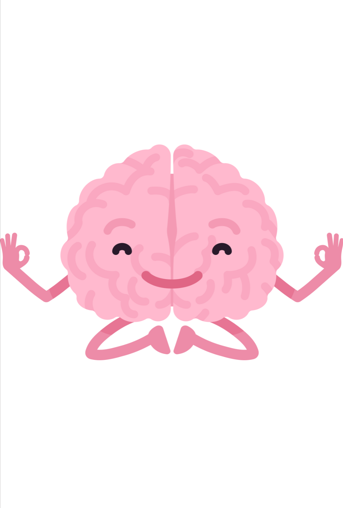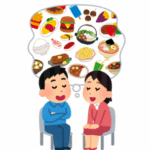The Difference Between Anxiety and Depression: Untangle your Confusion
Mental health issues are taking a peak nowadays. It is seen in all age groups. The most hotly debated — and most ill-conceived notions are anxiety and depression. Although both are mood disorders and they do share very similar symptoms but they are essentially different from each other in emotional aetiology, train of thought, physical symptoms, and attitude towards it.
Understanding the difference between Anxiety and Depression is helpful for knowing accurate diagnosis for its treatment and also for empathy and education regarding mental health.
Anxiety and Depression
Anxiety is excessively heightened concern, apprehension, or fear disproportionate to the thought that provokes it. Anxiety is expectancy-based — an unjustified fear of what may happen. In Anxiety disorder there are repeated and disabling fears that interfere with everyday life.
Depression, on the other hand, involves constant unhappiness, hopelessness, and insensitivity in experiencing pleasure or interest in things that were once enjoyed. Depression creates a smothering mood state in which motivation to do anything fades away and life becomes aimless or energy is drained.
As much as these descriptions might read plain simple, in actuality the symptoms get muddled or unpredictable — and it might be difficult to tell them apart without observing.
Emotional Core Differences
Deep-seated anxiety is fear — that is, fear of what is off the pike or what is going to occur. The mind becomes hysterical and has a tendency to telescope in on disaster thinking. The affective tone of anxiety is one of restlessness, tension, and expectation.
Depression is less of a feeling of sadness, emptiness, and flat affect. It is more typically an experience of loss of membership, enjoyment, or significance and saturated with constricting feelings of worthlessness or helplessness.
Briefly:
- Anxiety is the mind obsessing over and over again, “What if?”
- Depression is the mind complaining to themselves, “What’s the point?”
Cognitive and Thought Patterns
The thought patterns in anxiety are fretting over threats perceived. The mind is in overdrive, attempting to prepare itself for danger — perceived or real. The thought tendencies are bound to consist of overthinking, catastrophizing, excessive vigilance, and ruminating due to intrusive thought.
In depression, cognitive style is stuck and slower. Thought is hypercritical and exquisitely negative and broods on past failure or impending hopelessness. There is a common infuriating mental dialogue of failure, inadequacy, or culpability.
These internal dialogues speak the most radical psychology differences:
• Anxiety is preoccupied with prevention and control.
• Depression is where the mind becomes preoccupied with loss and meaninglessness.
Physical Symptoms
Both illnesses are the body but differently.
Anxiety will result in increased physiological activation. Some of the usual bodily symptoms are:
• Tachycardia
• Skin breathing
• Muscle tension
• Sweating
• Dizziness
• Gastrointestinal discomfort
These are the body’s fight-or-flight response when it comes on too strongly or at the wrong time.
Depression, however, results in slowing down of physical as well as mental activity. Physical symptoms may be:
• Slope energy or fatigue
• Slow sleep (hypo- or hypersomnia)
• Developing changes in appetite or weight
• Experiencing Psychomotor retardation (slowness of speech or movement)
• Having general pain or aching without a known cause
The body is heavy, slow, or just won’t move in depression. The body is revved and wired in anxiety.
Behavioral Impact
Anxiety means behavioral avoidance that is not doing things, staying away from people, places, or even making decisions that could create fear or tension. Procrastination, withdrawal (social), and compulsions (such as checking or seeking reassurance) are common.
Withdrawal is a causative depression, but of a different type. It is not induced by fear but by loss of energy or motivation to act. A person may withdraw, become apathetic, or quit work due to hopelessness or lack of interest.
Both disorders are causative of impairment of function on a day-to-day basis but due to reasons quite different.
Overlap and Coexistence
Depression and anxiety also tend to accompany one another — an incidence referred to as comorbid depression and anxiety. Indeed, research indicates that as many as 50% of individuals diagnosed with depression also experience substantial symptoms of anxiety.
This. Overlap is possibly more difficult to recognize and treat. An example would be to be intensely anxious that, over time, contributes to burning out but, through this, builds up to numbness and low mood — hence depressive illness. Chronic depression, on the other hand, may build on fear of loneliness, financial loss, or illness.
Though the two events mirror one another, the causes differ:
• Panic is the product of fear.
• Desperation motivates depression.
Determining what is primary — or whether both occur — is the window to successful intervention.
Causes and Contributing Factors
Depression and anxiety are illnesses, which are developed because of the interaction of many factors like biological, psychological, and environmental factors.
Risk Factors Shared:
• Genetics and family history
• Childhood abuse or neglect
• Clinical stress
• Major changes in life (e.g., divorce, losing job)
• Somatic illness
• Substance abuse
Triggers Specific to Anxiety:
• Unrealistic self-expectation or perfectionism
• Rejection or judgment fear
• Uncertainty and loss of control
• Information burden and overstimulation
Depressive Triggers Specific to a Specific Circumstance:
• Deprivation or long-standing loss
• Isolation or loneliness
• Lack of direction or meaning
• Long-standing frustration or frustrated life goals
Although causes are similar, the expressions might be different by temperament, coping, and personal history.
Diagnosis and Treatment
By clinical interviews, self-report questionnaires, and impairment of functioning, diagnosis of anxiety or depression can be done. Mental health professionals usually follow the DSM-5 (Diagnostic and Statistical Manual of Mental Disorders) , a criteria to categorize any particular disorder.
Treatment Options:
1. Psychotherapy
• Cognitive Behavioral Therapy (CBT) is highly effective for both the disorders.
• In anxiety, CBT targets hard irrational fear and avoidance behavior.
• In depression, CBT targets hard negative thinking and activity enhancement.
• Other options include Mindfulness-Based Cognitive Therapy (MBCT), Interpersonal Therapy (IPT), and Acceptance and Commitment Therapy (ACT).
2. Medication
• Only taken when prescribed by professionals.
• Short-term anti-anxiety medication
• Antidepressants
3. Interventions in Lifestyle
• Regular physical exercise
• Nutrition and healthy diet
•ruba sleep hygiene
• Meditation and relaxation exercises
• Effective contact and social interaction
4. Support Systems
Support groups, trust relationships, and psychoeducational support does help a lot in recovery.
Taking early treatment makes a huge difference. Untreated, anxiety becomes panic disorders or addiction; depression creates suicide risk.
Why Knowing the Difference Matters
Misdiagnosis or misnaming of such illnesses could lead to improper treatment or neglect of a person’s subjective experience. While both anxiety and depression often occur together, they also both require special therapeutic work.
- Seeing the distinction.
- Enables people to make sense of their internal experience.
- Helps therapists to design better treatment plans.
- Helps the general public be aware of the diversity of mental illnesses.
Conclusion
Anxiety and depression are interpreted as similar, but they differ in their ways. One confides tomorrow’s fears; the other interprets unhappiness in the here and now. In studying their own languages — emotional, cognitive, and physical — not only are the suffering enabled but so too is a world of compassion, knowledge, and tolerance for mental illness. Understanding the difference makes it easier for recovery.
Healing does not begin with cure but with awareness. And from awareness, comprehension, it’s the very first genuine step towards hope.



